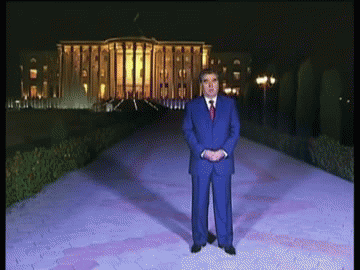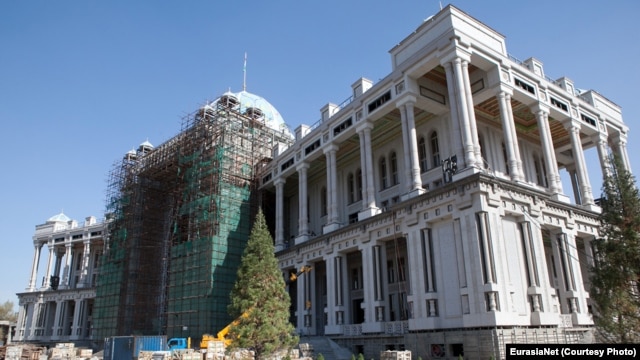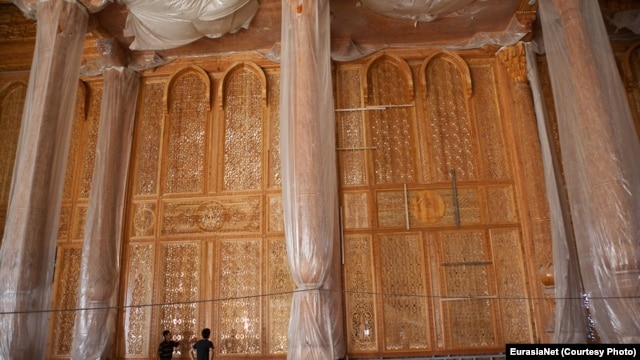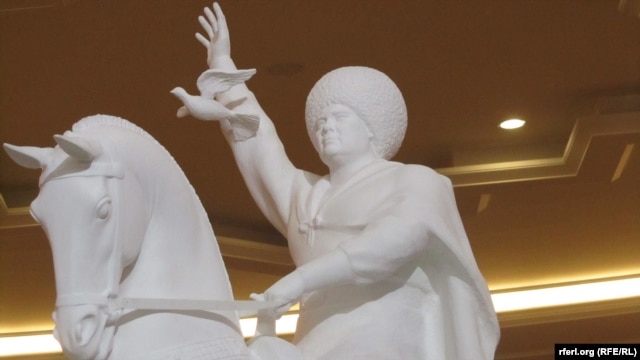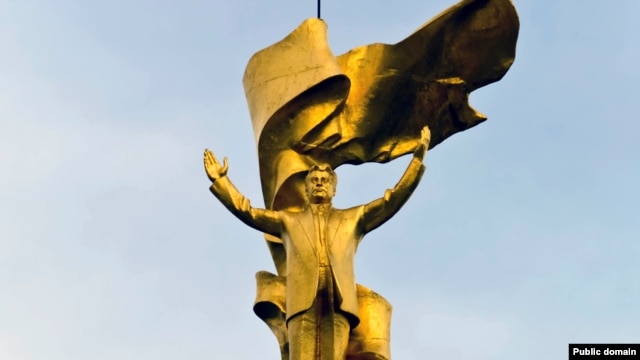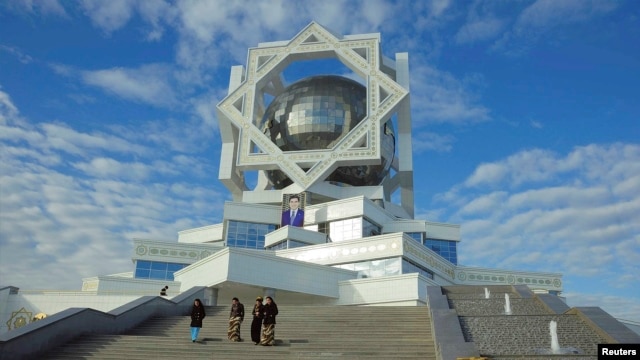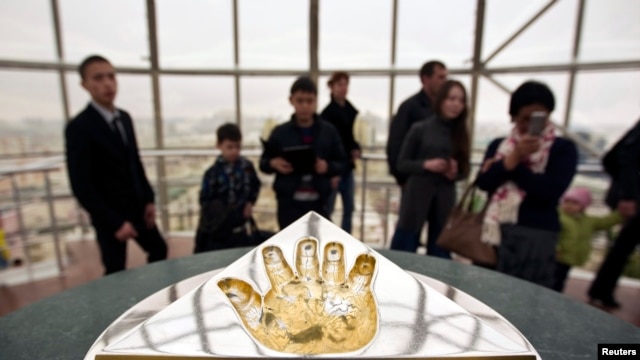-
Tajik tree, symbol of 'eternal independence', dies
- December 22, 2013 - 7:39 pm
- Tajikistan
- Comments Off on Tajik tree, symbol of 'eternal independence', dies
Agence France-Presse, August 21, 2013
A 50-year-old tree planted in the centre of Tajikistan's capital Dushanbe by President Emomali Rakhmon this year as a symbol of the ex-Soviet state's "eternal independence" has dried up and died.
The coniferous sequoia, reportedly imported from the United States and planted by Rakhmon at a ceremony in March outside the foreign ministry, died as a result of dehydration.
The tree, of a type which can live for up to 3,000 years, appears to have suffered as a result of a heatwave that pushed temperatures as high as 45 degrees Celsius (113 Fahrenheit) in Tajikistan, a Central Asian state that is hardly a natural home for the species.
A similar sequoia tree nearby -- which was not planted by the president -- is in better shape.
The embarrassment over the tree comes after strong winds earlier this year blew down a Tajik flag that officials had proudly boasted was fluttering at the top of the world's tallest flagpole in Dushanbe.
-
RFE/RL on the Vanity (Mis)use of Public Space (and Funds) in Central Asia
- July 15, 2013 - 11:54 pm
- Central Asia, Kazakhstan, New monument, Tajikistan, Turkmenistan
- Comments Off on RFE/RL on the Vanity (Mis)use of Public Space (and Funds) in Central Asia
Lots Of Personality: Central Asia's Vanity ProjectDeana KjukaRFE/RL TransmissionsThe finishing touches are being applied to what has been described as the world's largest teahouse, in the Tajik capital, Dushanbe.
July 09, 2013
Although Central Asia boasts some of the world's oldest and most beautiful heritage sites, it is fast becoming equally well-known for ambitious, modern construction projects. As the region's authoritarian leaders have maintained their grip, building complexes have cropped up that seek to amplify certain leaders' personality cults.With Dushanbe aiming to break a world record with a humongous new teahouse, we take a look at eight of the highest-profile "vanity projects" in the Central Asian countries of Tajikistan, Turkmenistan, and Kazakhstan, starting with the aforementioned hot-beverage outlet.
1) World's Largest Teahouse
Already home to the world’s biggest flagpole and flag (see below), Tajikistan now hopes to unveil the world’s largest teahouse. These photos by Eurasianet of the teahouse in construction show what promises to be a beautiful multidomed structure with hand-carved designs in wood. Built at an estimated cost of $60 million (or 1 percent of the country's GDP), the opening of the teahouse is scheduled to coincide with Tajikistan’s independence day in September.2) Berdy On A Horse
When it comes to personality cults, no one really holds a candle to Turkmen President Gurbanguly Berdymukhammedov, whose face adorns buildings, office walls, and schools across the country. Known as "Arkadag" ("the Protector"), a self-bestowed title, Berdymukhammedov has a mounting fondness for equestrian statues to highlight the Akhal-Teke -- Turkmenistan’s prized breed of horse. Clearly, there was no better way to immortalize this passion than to build a white marble statue of Berdymukhammedov on a horse with a dove suspended in midair beside his outstretched arm.A statue of Turkmen President Gurbanguly Berdymukhammedov astride his horse in the attire of a traditional tribal chief.
The strategy has suffered its setbacks. Just recently, the Turkmen leader took a nasty tumble during a horse race, which did little for his dignity.
3) Dushanbe's Outsized Library
According to Tajik officials, Dushanbe’s $40 million library is the largest in Central Asia. When it was first opened in the fall of 2012, the library only had one quarter of the 10 million books that it is capable of storing and Tajik citizens were asked to donate their own books. However, many wonder if the library is fulfilling its original purpose given that its most-popular feature is the electronic reading room equipped with 170 computers.WATCH: Tajikistan's $40 Million Library
4) Turkmenbashi Lives On
Berdymukhammedov’s late predecessor, Saparmurat Niyazov, built a 12-meter-high, gold-plated statue of himself that rotated throughout the day so that "Turkmenbashi" ("the Father of all Turkmen") would always face the sun. Although the statue was removed in 2010 from atop the 75-meter Arch of Neutrality in the center of Ashgabat, the Turkmenbashi found a new home on a Monument of Neutrality that is located on the outskirts of the Turkmen capital in late 2011.5) World's Largest Flagpole
Tajikistan has had a tough time keeping its flag flying on what "Guinness World Records" says is the largest flagpole on the planet. Located in front of President Emomali Rahmon’s opulent Palace of Nations complex in downtown Dushanbe, the flag was ripped apart a few months ago by strong winds. All Central Asian countries celebrate a National Flag Day, apart from Kazakhstan.Download6) Wedding Palace
Getting married in Turkmenistan is no easy task, thanks to a lengthy list of requirements that all couples must fulfill on their special day (including planting trees and visiting an earthquake memorial site). Newlyweds can also celebrate their nuptials with family and friends at the "Toy Mekany," or "Wedding Palace." Since it was opened in October 2011, couples register and traditionally rubber-stamp their union by having a wedding photo taken there under the watchful gaze of a portrait of President Berdymukhammedov.7) Nazarbaev’s Lucky Handprints
Kazakh President Nursultan Nazarbaev's personality cult is pretty low-key in comparison to his neighboring leaders. He has nevertheless managed to have two statues erected in his honor, a museum dedicated to his legacy, a university named in his honor, and several sets created of bronze, Hollywood-style handprints. Kazakhs have taken to placing their own hands into the moldings to make wishes. One set of gilded handprints atop the famous Baiterek Tower in Astana has also become a popular adornment for tourist photos.A gilded handprint of Kazakh President Nursultan Nazarbaev inside the 97-meter-high Baiterek Tower in Astana
8) Palace Of The Nation
Described as a neoclassical structure with 64 faux Doric-columns, Tajikistan’s Palace of the Nation is an extravagant presidential complex filled with parks and fountains. Home to administrative offices and President Rahmon, the building reportedly cost a whopping $300 million to build and a 19th-century synagogue was controversially demolished to make space for it.